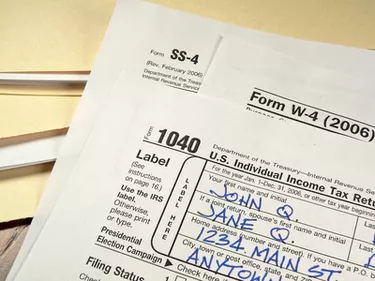
A money market account (MMA) and a 401(k) plan are not the same. The former is a type of savings account while the latter is an investment account. Some of the key differences lie in the type of deposits, or contributions, made, how the money grows, and whether or not withdrawals can be made from the accounts.
Investment Versus Savings Accounts
Video of the Day
Investment accounts are usually created with a future purpose in mind, such as education or retirement. They are not as liquid as savings accounts, meaning that the funds are not as accessible and the government highly discourages early withdrawals. Generally, the rate of return on investment accounts is higher than savings as well. Savings accounts earn interest based on market rates, whereas investments earn returns based on dividends, capital gains and payments made to bondholders.
Video of the Day
Money Market Accounts

A money market account is a type of savings account whereby deposits are made and interest accumulates on those deposits. It is referred to as a cash equivalent because money may be withdrawn without repercussion so long as a minimum balance is maintained within the account and the number of withdrawals is not exceeded.
401(k) Plans

A 401(k) plan is an employer-sponsored investment plan in which an employee can elect to have part of her salary contributed before any taxes are paid on it. Therefore, the tax benefit is realized now, plus more money can be contributed to the account to grow. The employee can choose to invest in various stocks or mutual funds offered by the plan. Rather than withdrawals, loans may be permitted from the account which must be repaid prior to changing jobs.
Employer Contributions to 401(k) Plans
An employer will often make matching contributions to the plan as a percentage of the employee's contributions, usually 6 percent of the total amount. However, the funds will not fully belong to the person until he has worked there for a number of years at which point the employee is fully vested.